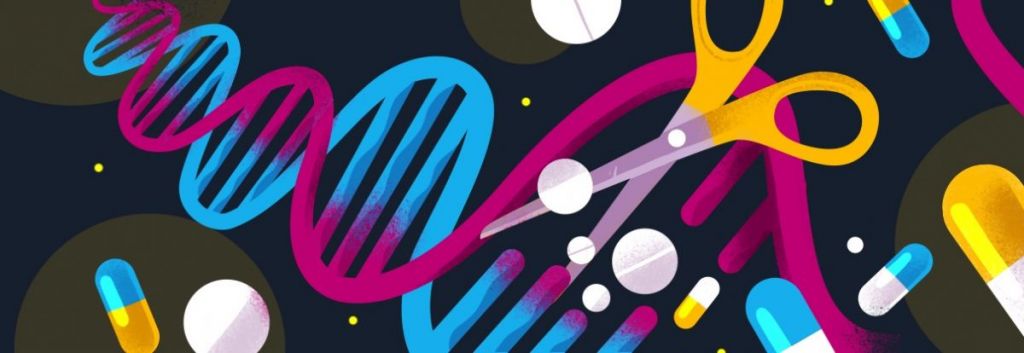Newsletter Signup - Under Article / In Page
"*" indicates required fields
Just like that, another decade has gone by. It’s time to look at what the future will bring to the European biotech industry.
European biotech has seen some huge breakthroughs and a few setbacks during the last 10 years. As we enter a new decade with great uncertainty due to the global Covid-19 pandemic, let’s look at what the next decade has in store for European biotech.
Oncology
Historically, cancers were treated with small molecule-based drugs. The last 10 years have seen a move towards immunotherapy, either through boosting the patients’ own immune cells as is the case of CAR T-cell therapies or through immune checkpoint inhibitors that make cancer cells more visible to the immune system.
The oncology field is getting crowded with numerous different treatment modalities in clinical trials, which include gene and cell therapy, radiopharmaceuticals, gene editing, and microbiome approaches, among others. But will we need them all in the future?

Martin Bonde, CEO of Inthera Biosciences in Switzerland believes that we do. “For a meaningful target that sits inside the cell nucleus, a small molecule will still be very relevant. The CAR T-cell therapies are very efficacious but so far their indication range is very narrow.”
“One area to watch is bi- and tri-specific antibodies, which are engineered to recognize two or three cancer epitopes as well as to activate tumor-killing immune cells. The industry is getting much better at developing these and they might actually threaten CAR T-cell therapy somewhat because they are cheaper and easier to produce.”
According to Bonde, there will be room for all modalities of cancer and multiple combinations of them. However, he expects the issue of pricing to be determined by the efficacy of the treatment rather than the cost of production. “I think it’s going to be really interesting to see how all these new technologies pan out in the next decade,” Bonde added.
Gene therapy
The last decade saw massive leaps in the approval rate of many gene therapies. These treatments have been a breakthrough as a one-off solution for a wide range of conditions, many of which had no treatment available before.
Over the next ten years, we will witness the development of the first gene therapies based on gene editing technologies such as CRISPR-Cas9, whose developers were awarded the Nobel Prize in Chemistry this year.
While the first clinical trials testing treatments based on CRISPR-Cas9 gene editing are already running, we have yet to see the results of late-stage trials assessing whether the technology is efficacious and safe. In parallel, we will see the development of treatments based on other gene-editing modalities such as prime editing, base editing, and transcriptional activation.

‘’We have spent the last decade building new tools. I expect that the next decade will solve the challenges associated with the safety and delivery of CRISPR-Cas technology so that we will start to see the full clinical application of these tools. Single-cell technologies may also be important here, as they should reveal ways to target specific cell types/organs based on receptor expression,” said Alexandra Bause, who leads a venture creation program at the investment firm Apollo Health Ventures.
Gene therapy is most often associated with curing genetic diseases and treating cancer, but Bause sees another key application emerging in the next decade. “Novel gene-editing technologies that will boost the expression of a gene rather than alter its sequence will also be important, especially for health-promoting applications, such as diseases related to aging.”
Personalized medicine
The completion of the Human Genome Project in 2003 brought the promise of personalizing medicine to each individual’s unique genetic makeup. However, it hasn’t been until recently that personalized medicine approaches have really started to gain traction in the pipelines of biotech and pharma companies.
“We have seen early breakthroughs for certain cancers that we know are driven by a particular mutation,” said Bause. “An obvious example is the use of Herceptin to treat breast cancers that express the HER2 receptor. But this was approved in the late 90s and we haven’t seen much happening outside of oncology and a few genetic diseases yet.”
Bonde has high expectations for personalized medicine over the next decade and feels that the biggest advances may come from better stratification of patients. “I think that in the next 10 years, personalized medicine will become dominating. We will be able to tailor medicines for the patients who would benefit the most, and this will be made possible by advances in human genomics. The cost of this is decreasing and speed is increasing.”

Bonde also points out there has been a cultural shift among payers in the medical industry over the last decade. “Ten years ago, buyers were willing to fork out double for a new treatment that was only 10% better than the competitor, but this has changed. New is not good enough anymore. Better safety and efficacy are essential. To obtain this, we need to be better at stratifying patients, using information about genetics and biomarkers.”
“I think that all diseases need a personalized approach because no disease is the same in two individuals,” Bause explained. She pointed out that new technologies such as CRISPR-Cas9 gene editing will allow the biotech industry to go to the next level in terms of personalized medicine.
However, there will still be room for a wide range of treatment modalities, both traditional and new. “I believe that if we can leverage all the different kinds of tools and technologies available, we will begin to see personalized medicines in broader disease areas.”
Drug discovery
The development of any drug is long, costly, and subject to stringent regulations. And these challenges only multiply when tackling complex diseases, such as cancer or neurological conditions. In order to reduce the financial and logistical toll of drug discovery, the pharmaceutical industry is starting to shift towards automating the R&D workflow.
Remote robotic labs that rely on machine learning are becoming a reality, a trend that has been further catalyzed by the Covid-19 pandemic. In a typical robotic lab, a technician sets up a robot with the reagents and labware necessary for the experiment. The experimental procedure is then programmed and controlled virtually, and when the experiment is complete the data is automatically collated, structured, and returned to the user. This can free up a lot of valuable time for scientists to focus on the more intellectual and challenging tasks.

In addition, artificial intelligence is becoming more and more common as a tool to identify drug candidates against a specific target. This can significantly reduce the time it takes to select a drug candidate to start clinical testing.
A recent example is that of Exscientia, an Oxford-based company that specializes in using artificial intelligence to inform the drug discovery process. Earlier this year, a drug candidate for obsessive-compulsive disorder identified by Exscientia became the first AI-designed drug to enter clinical trials. It took the candidate one year to go from identification to clinical trials, while typically this lasts around five years.
“I think if we can get to quantum computing in the next decade, we will be able to go from using machine learning predominantly for chemistry to also using it for biology,” said Greg Bailey, CEO of US-based biotech company Juvenescence. “I believe that this is going to help us dramatically in understanding the data needed to find new drug combinations and repurpose drugs, as well as identifying the right patients for the right drugs.”
Wearables
There is an emerging trend to track our health on an individual basis that is starting to be picked up by the biotech and pharma industry. According to Bause, the big data we obtain from genome sequencing will be crucial to understand what is happening in our cells in both health and disease. This information can be translated into wearable devices to promote health.
“What will be really interesting going forward is to see how this data can be linked to what we can do with wearables that are feasible for everyone to wear and use. Imagine that your Apple Watch or Fitbit can measure a digital biomarker, and then tell you that you should go and get a checkup or you should be taking this and that preventative medication. That is a long-term view, but it could be the result of this vast knowledge,” Bause explained.

Within the digital health field, continuous blood glucose monitoring devices are already widely used for the management of diabetes. Over the next decade, we can expect wearables to expand towards measuring many more health markers in a single device.
“I see a future where we can upload personal biometric data through a smartphone app for free, and the app will use machine learning to make recommendations about your diet or exercise pattern on the spot. You can hit a button to transfer all of that information to your doctor, or another button to delete it,” said Bailey.
“By sharing such personal data, we become participants in an ecosystem that learns from everybody. This can be used to refine the application. That’s where I see the world going in the next decade.”
The future of European biotech
All in all, we can expect to see a lot of growth in the biotech industry over the next decade. For Europe, this growth will offer an opportunity to strengthen its position in the global biotechnology market, where it will keep competing with tough rivals, such as the US and China.
“Today, if you compare liquidity and depth of market and the access that companies have to big investors making large investments, Europe is still playing catchup with the US,” said Antoine Papiernik, Managing Partner at the life sciences venture capital firm Sofinnova Partners.
“Take the global capitalization of European companies on the public markets here — we are still not at the scale of the US Nasdaq — technical factors like the float come into play. But that doesn’t mean it won’t change. Give it a generation, who knows what will happen. The bottom line is that companies need to adapt and be flexible. They need to go where they can find the means to sufficiently fuel their growth.”
“Europe will be at the center of life sciences over the next decade. It will continue to be a steadfast, moderate counterbalance between superpowers to the East and West,” Papiernik concluded.






